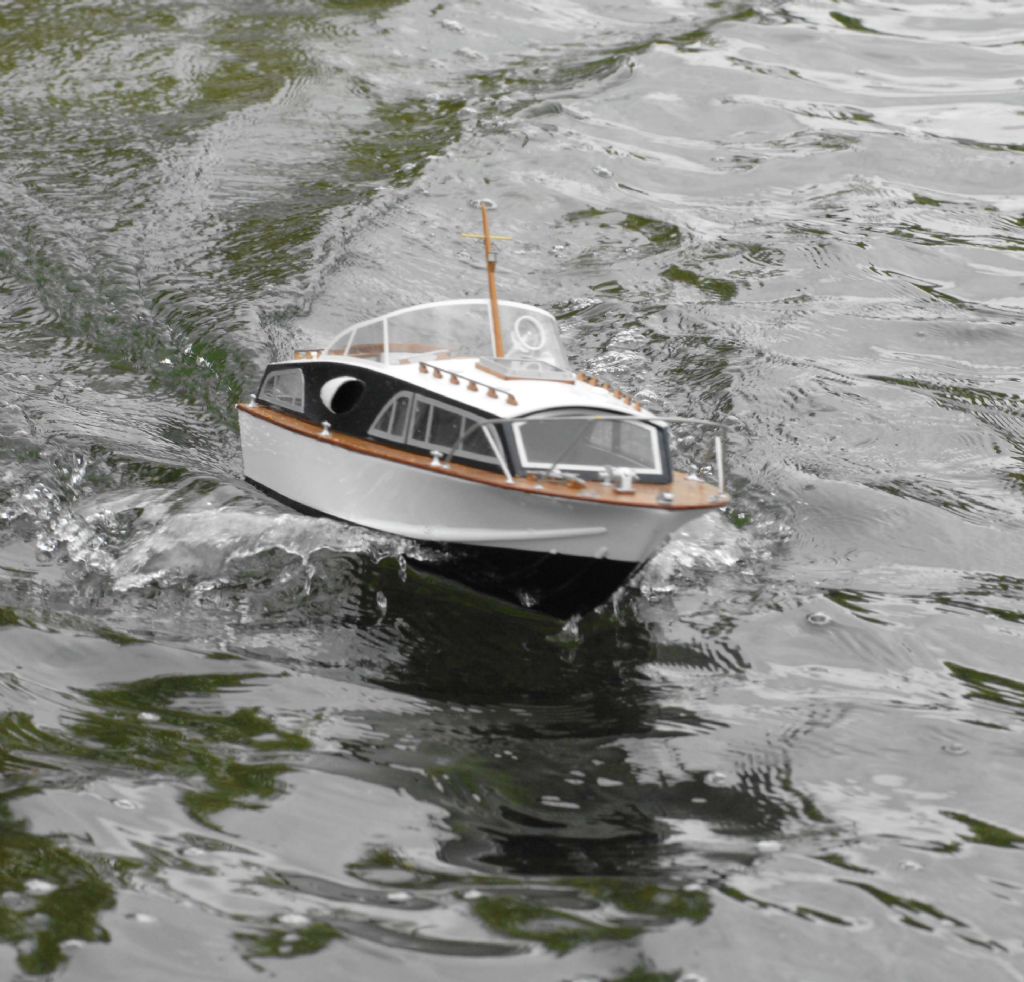An inrunner motor is physically like a brushed motor.
An outrunner had the outer case rotating with the shaft.This means that you cannot put a coil around it.
Inrunner usually rotate very fast indeed, and are good for racing boats. Outrunner run slower with more torque, and are usually better for sports boats like yours. The one you have picked is an outrunner.
It looks good and powerful – perhaps too powerful, and certainly rather expensive for me. I note it has a 5mm shaft – I would tend to go with a 4mm shaft and a 4mm prop-shaft – perhaps something like this, which should provide lively but not extreme performance:
http://rclife.co.uk/Brushless-Motors/Brushless-Outrunner-Motors/C3548-1100KV-Brushless-Outrunner-Motor?sort=p.price&order=ASC
Brushless motors are odd things – they have no brushes, and brushes tend to limit the power you can put into a motor. Without brushes, you can keep putting more and more power into a motor until it melts. So specifying the maximum power a brushless motor can develop depends rather a lot on the cooling you can provide.
Outrunners tend to cool themselves better than inrunners, and for most sports boats the trick is to run the motor at a sufficiently low power to mean that extra cooling is not needed. The motor you picked, for instance, can take around 40A at 15v – I'm guessing you might think of running it at 10A/7.2v? 100W should be fine for an Aerokits River Police, though I would defer to the motor specialists for a better guess. The motor you picked is 600W max – my other suggestion is 500W…
I would think you would not need to cool the motor if running at 7-10v. Just make sure that it's in a reasonable-sized engine compartment, and perhaps allow a little ventilation? If you need to cool an outrunner, it's an odd exercise – the outside rotates and there's a small section which stays static and is used to clamp it to the motor mount. The motor mount itself is then cooled
Edited By Dodgy Geezer on 12/04/2016 23:30:01





